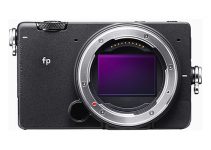Most of the time filmmakers don’t have the advantage of picking the perfect space and shooting at the perfect time when the light is illuminating your scene and subject in the best possible way.
The more common scenario is being forced into an available location and just having to make it work. It is possible to work some magic with those spaces if you know what you are doing.
The guys behind Film Riot are here to demonstrate how to pull off making any space look cinematic. With the right gear and the appropriate time you can transform a seemingly terrible space into a beautiful location on camera.
How do you work with difficult locations?
One place to start is with the camera. While the camera doesn’t usually have an impact on the location itself it can help you control the visibility and feel of the footage.
Being able to use large-sensor cameras, such as the Canon EOS C70, with shallow depth of field can minimize the distractions in the background. Throwing the background out of focus is a simple solution that might help a lot.
Next, you’ll want to address lighting. Starting with the key light you can bring up the exposure on your subject and then bring down the lighting on the background/location. This will make anything else in the background even less distracting.

Image Credit: Canon
Cleaning up location lighting that can be distracting, like blocking off a small light leak around a door or object in the room, can also help your shot. It’s not always about adding light, sometimes you want to remove it.
Using fill to add some more depth to your subject and even using negative fill to increase contrast can improve the overall lighting of the scene.
Practical lights used in the background or foreground, even if out of focus, can also add depth. Additional lights to give edge lighting can help break them up from the background.
Some fog machines to add haze will also help make a scene feel more diffused. It can definitely add atmosphere around lighting sources.
Going back to the camera, the better cameras have wide dynamic range that allow you to take advantage of stronger lighting design for capturing contrast with nuance throughout the entire range.
In another example it is more obvious how controlling the light is important to making less-than-ideal locations look good. By cutting all the house lights you can decide where and how to add light back in. Deciding what to bring back and what to leave out can help you keep the ugly stuff out.
Haze is also a help if you have a light in the shot since it’ll catch the actual beam and provide a nice cinematic look.
Lighting is key to cleaning up any location. It gives you almost all the tools you need to paint your scene and remove uglier elements while emphasizing the useable areas in the location.
What do you think about how they transformed the locations into more cinematic shots?
[source: Film Riot]
Order Links:
- Canon EOS C70 Cinema Camera (B&H)
Disclaimer: As an Amazon Associate partner and participant in B&H and Adorama Affiliate programmes, we earn a small comission from each purchase made through the affiliate links listed above at no additional cost to you.



